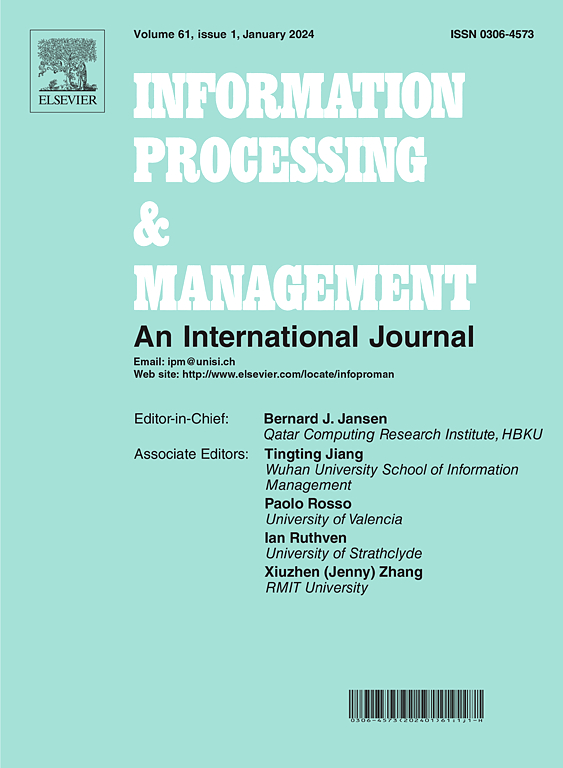Enhancing robustness in implicit feedback recommender systems with subgraph contrastive learning
IF 7.4
1区 管理学
Q1 COMPUTER SCIENCE, INFORMATION SYSTEMS
引用次数: 0
Abstract
Contrastive learning operates by distinguishing differences between various nodes to facilitate item recommendations. However, current graph contrastive learning (GCL) methods suffer from insufficient robustness. To mitigate the impact of noise and accurately capture user preferences, we propose a subgraph-based GCL method: SubGCL. Firstly, we devise a dynamic perceptual signal extractor that leverages node degree and neighborhood information to model subgraphs corresponding to nodes and compute mutual information scores. This approach enhances view adaptivity, thereby improving data augmentation robustness against noise perturbations. Secondly, we develop an association graph self-attention propagation mechanism. This mechanism constructs node clusters by randomly sampling nodes and edges, facilitating self-attention propagation on the graph to learn cluster associations and enhance recommendation accuracy. Finally, we reconstruct graph structures through recommendation loss and update node embeddings via contrastive learning to bolster the model’s accuracy and robustness in implicit feedback data. We conducted experiments on three publicly available real-world datasets. Results demonstrate that, compared to existing contrastive learning recommendation approaches, SubGCL achieves an average improvement of 4.96% and 3.98% in Recall and NDCG metrics, respectively.
利用子图对比学习增强隐式反馈推荐系统的鲁棒性
对比学习通过区分不同节点之间的差异来促进项目推荐。然而,目前的图对比学习(GCL)方法存在鲁棒性不足的问题。为了减轻噪音的影响并准确捕捉用户偏好,我们提出了一种基于子图的 GCL 方法:SubGCL。首先,我们设计了一种动态感知信号提取器,利用节点度和邻域信息对节点对应的子图进行建模,并计算互信息得分。这种方法增强了视图适应性,从而提高了数据增强对噪声扰动的鲁棒性。其次,我们开发了一种关联图自关注传播机制。该机制通过随机抽样节点和边来构建节点簇,促进图上的自关注传播,从而学习簇关联并提高推荐准确性。最后,我们通过推荐损失重构图结构,并通过对比学习更新节点嵌入,以提高模型在隐式反馈数据中的准确性和鲁棒性。我们在三个公开的真实世界数据集上进行了实验。结果表明,与现有的对比学习推荐方法相比,SubGCL 在 Recall 和 NDCG 指标上分别平均提高了 4.96% 和 3.98%。
本文章由计算机程序翻译,如有差异,请以英文原文为准。
求助全文
约1分钟内获得全文
求助全文
来源期刊

Information Processing & Management
工程技术-计算机:信息系统
CiteScore
17.00
自引率
11.60%
发文量
276
审稿时长
39 days
期刊介绍:
Information Processing and Management is dedicated to publishing cutting-edge original research at the convergence of computing and information science. Our scope encompasses theory, methods, and applications across various domains, including advertising, business, health, information science, information technology marketing, and social computing.
We aim to cater to the interests of both primary researchers and practitioners by offering an effective platform for the timely dissemination of advanced and topical issues in this interdisciplinary field. The journal places particular emphasis on original research articles, research survey articles, research method articles, and articles addressing critical applications of research. Join us in advancing knowledge and innovation at the intersection of computing and information science.
 求助内容:
求助内容: 应助结果提醒方式:
应助结果提醒方式:


